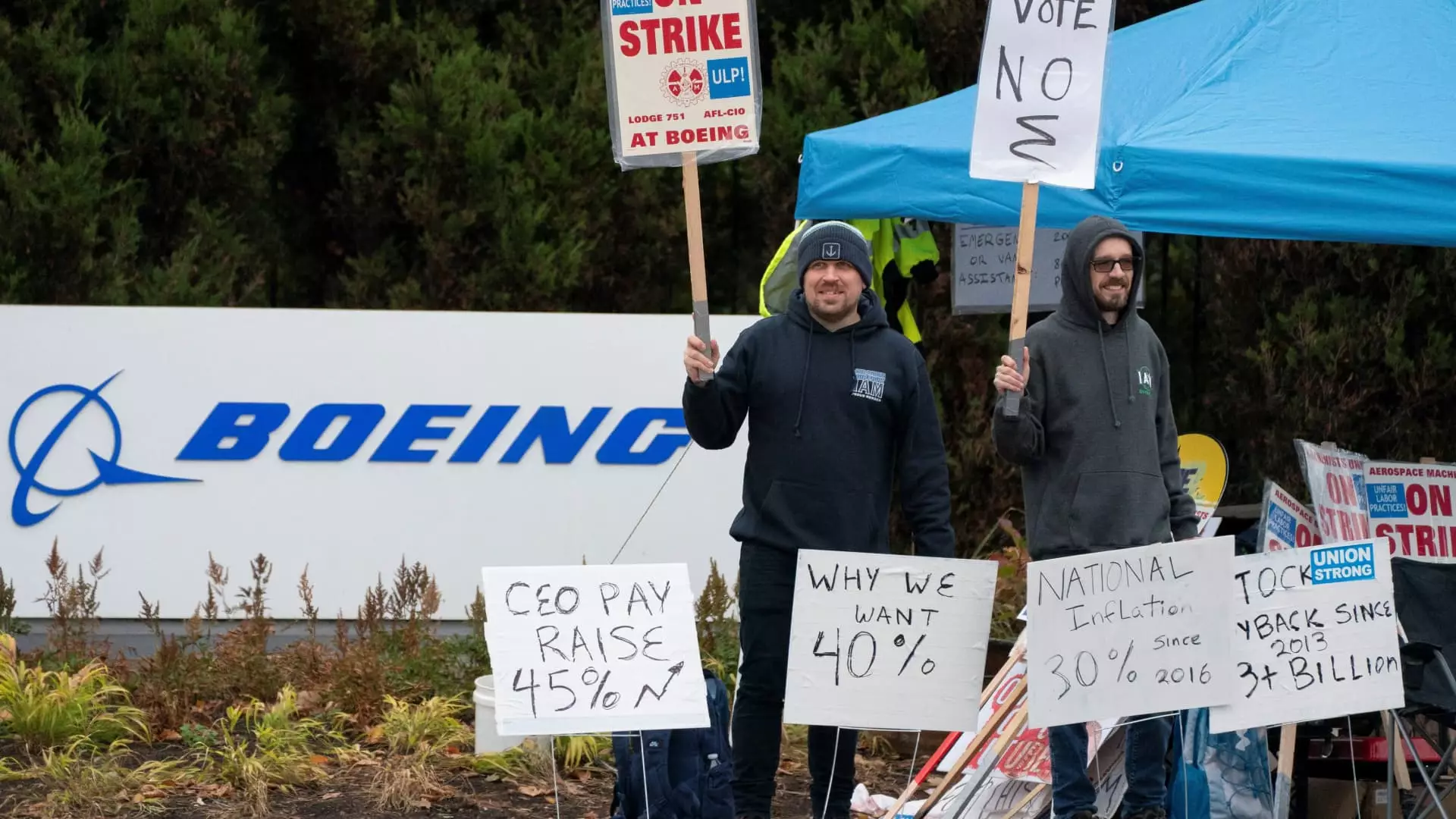Boeing’s ongoing battle with its machinists’ union has culminated in a recent agreement that aims to increase worker compensation and potentially terminate a protracted strike that has persisted for seven weeks. The International Association of Machinists and Aerospace Workers District 751, representing over 32,000 machinists primarily stationed in the Seattle area, has taken a firm stand regarding the negotiations, urging its members to vote in favor of a new contract proposal. The urgency behind this push is palpable, as Boeing faces substantial financial losses and operational disruptions amid a critical period for the company.
The strike, which began on September 13 after workers rejected a tentative agreement, has highlighted Boeing’s vulnerability in an increasingly competitive aerospace market. This situation has compelled both the union and the company to reevaluate their strategies in an attempt to restore productivity and workforce morale while addressing the financial realities of the industry.
The newly negotiated contract proposes a 38% wage increase over four years, representing a modest increase from a previous offer of 35%. This adjustment translates to nearly 44% in compounding pay increases, a significant improvement that reflects the union’s commitment to securing better financial terms for its members. In addition, the proposal includes a one-time ratification bonus of $12,000, giving workers the option to select between this or a previous offer that included a $7,000 bonus and a $5,000 contribution to retirement plans.
The union’s position on the new offer was clear: extending the strike further, in their view, would not be a prudent choice. Leaders have indicated that they believe they have maximized their bargaining power, emphasizing that accepting the current terms is essential to avoid potentially regressive offers in the future.
The ramifications of this strike extend far beyond the immediate concerns of wage disputes. Boeing, as a premier U.S. exporter, has faced considerable pressure from not only its workforce but also external stakeholders, including the Biden administration. The involvement of Acting Labor Secretary Julie Su in the negotiations underscores a recognition of the strike’s potential impact on employment numbers and economic stability, especially ahead of the crucial presidential election.
Boeing’s CEO Kelly Ortberg has expressed a keen desire to reestablish focus on the company’s core mission: delivering high-quality airplanes. However, this ambition is clouded by multiple challenges the company faces, including past production flaws and safety concerns. Following a devastating quarter where Boeing lost over $6 billion, the economic viability of the company depends on swiftly resuming its production lines. The company stands at a crossroads where successfully negotiating labor peace is now inextricably linked to its long-term recovery strategies.
In an increasingly competitive aerospace environment, where technology giants such as Microsoft and Amazon have significantly influenced the local economy, the cost of living in the Seattle area has surged. This rise in living costs has exacerbated the demand for better compensation from Boeing’s machinists. The recent contract proposal must thus be viewed within this broader context. The company has committed to manufacturing its next planes in the Puget Sound region, yet the movement of 787 Dreamliner production to South Carolina has left certain workers aggrieved and questioning the firm’s commitment to union labor.
The long-term stability of Boeing hinges not just on resolving this strike but also on restoring the trust and loyalty of its workforce. Workers are not merely negotiating their salary; they are standing up for recognition and respect within the corporate ecosystem. This situation serves as a critical reminder of the delicate balance between labor and management in the aerospace industry and the importance of fostering a culture that values its employees.
As Boeing approaches the vote on this new contract, both the company and its machinists find themselves at a pivotal moment. The outcomes of these negotiations will likely define the future trajectory of Boeing, shaping both its workforce dynamics and its position in the global aerospace market. Balancing immediate financial concerns with the need for a cohesive work environment will be paramount as both sides aim to navigate this challenging landscape together. In essence, the decision to return to work is not just about wages—it’s about rebuilding a foundation of collaboration that can propel Boeing forward in its quest to reclaim its status as an industry leader.

